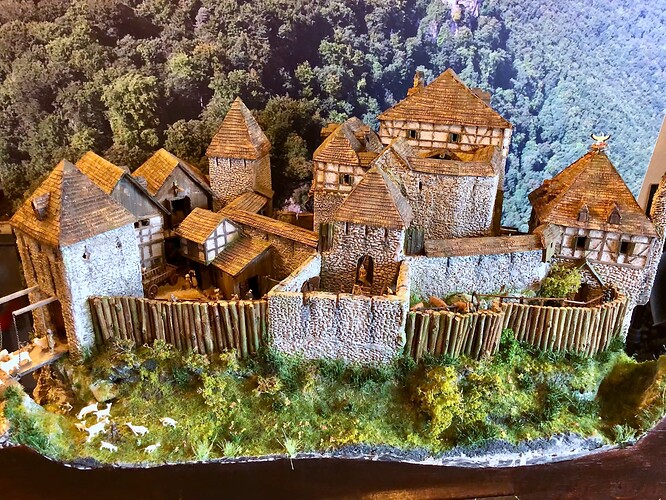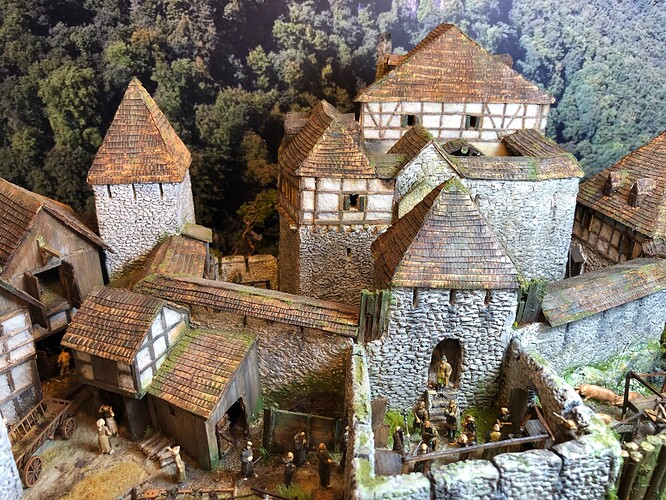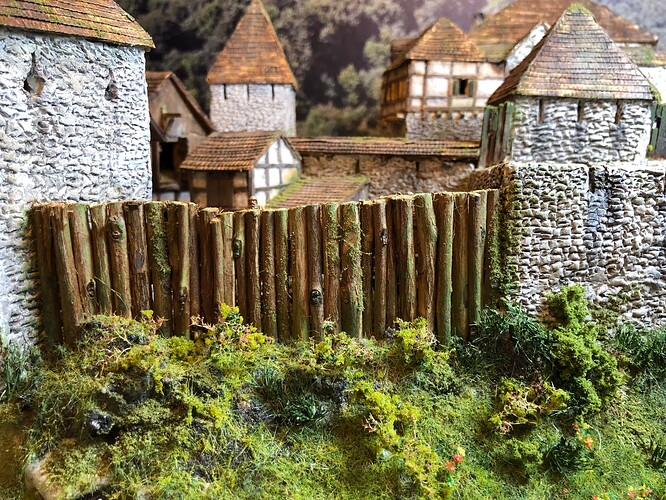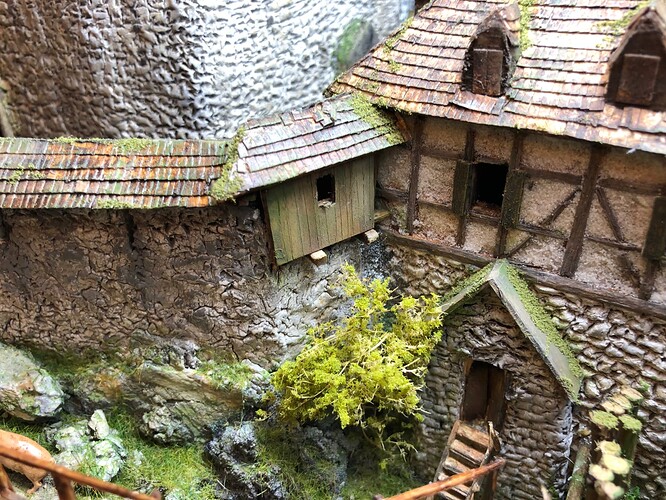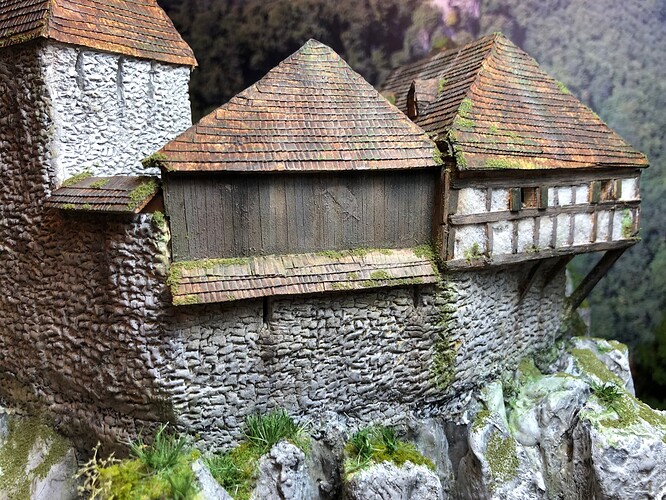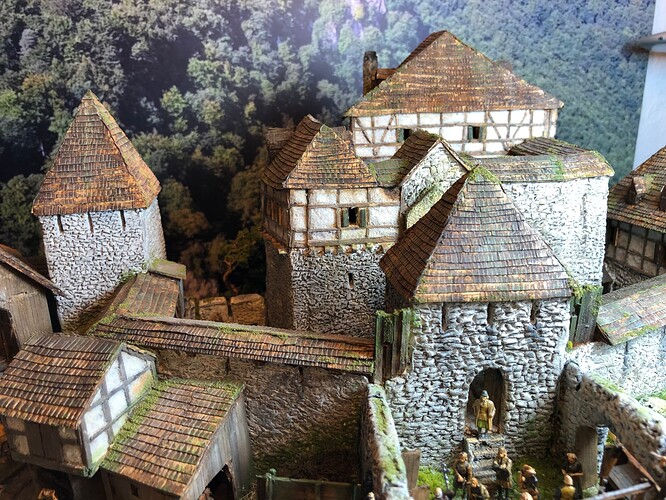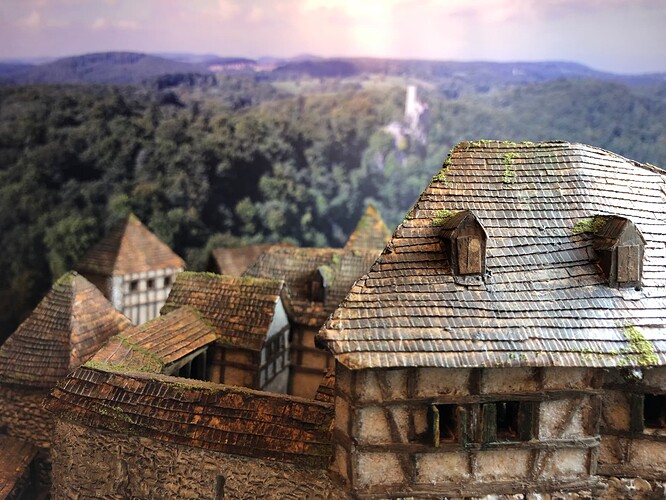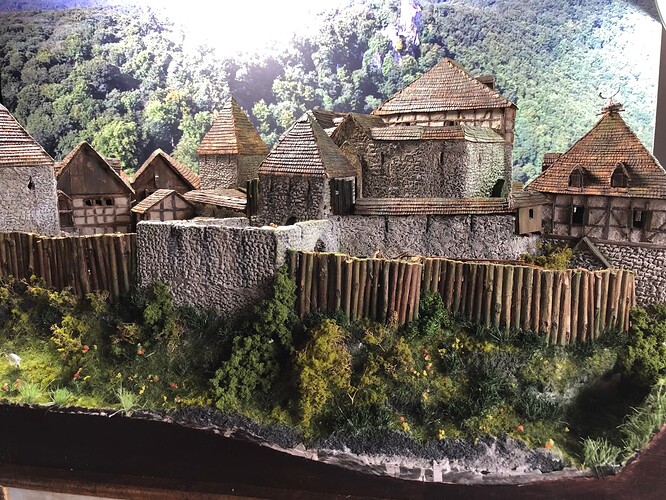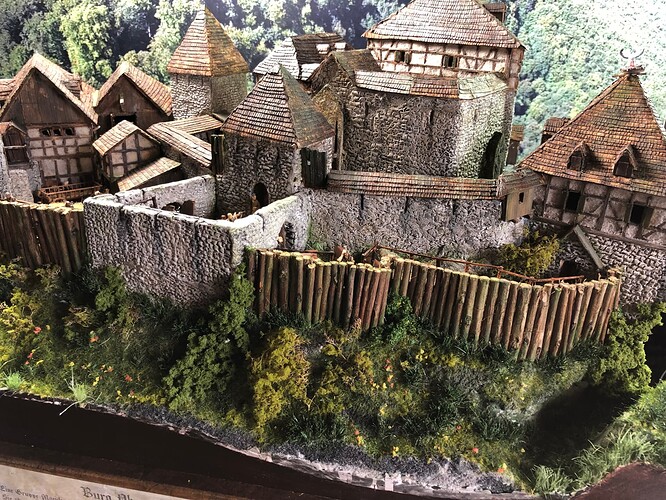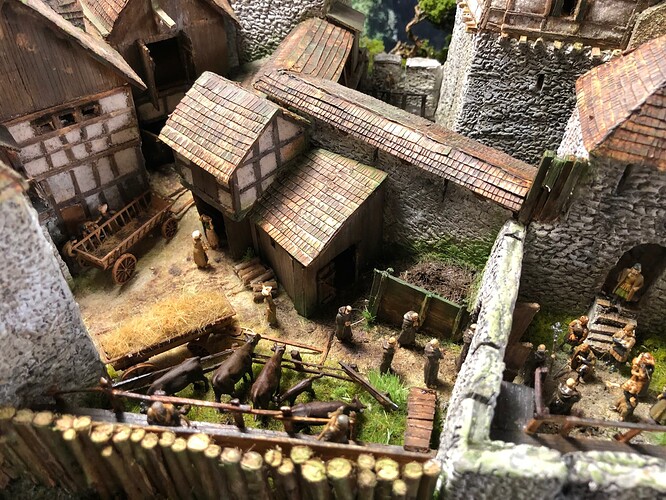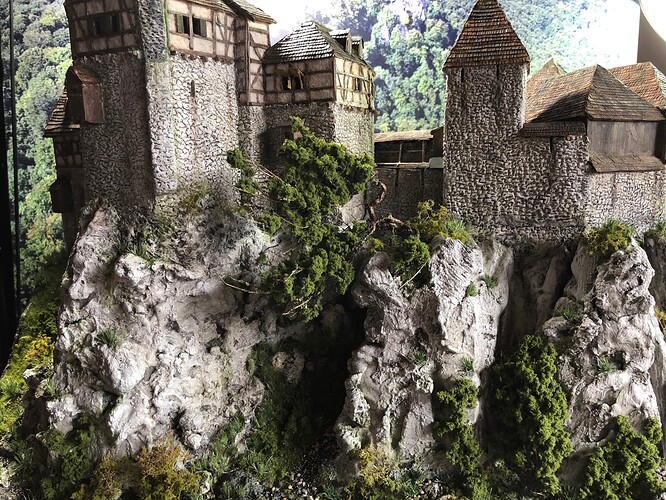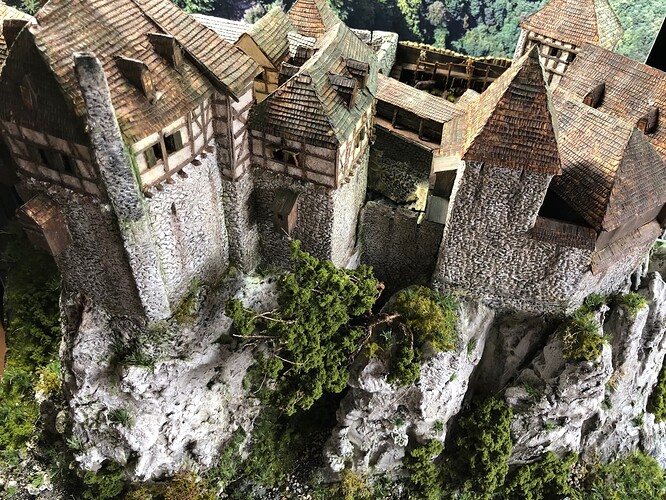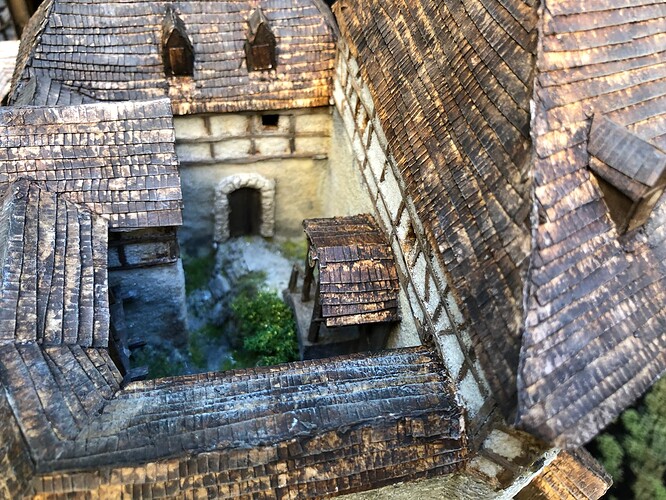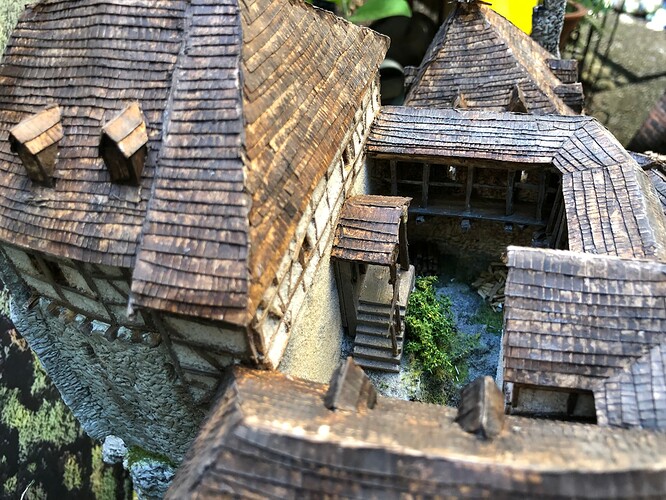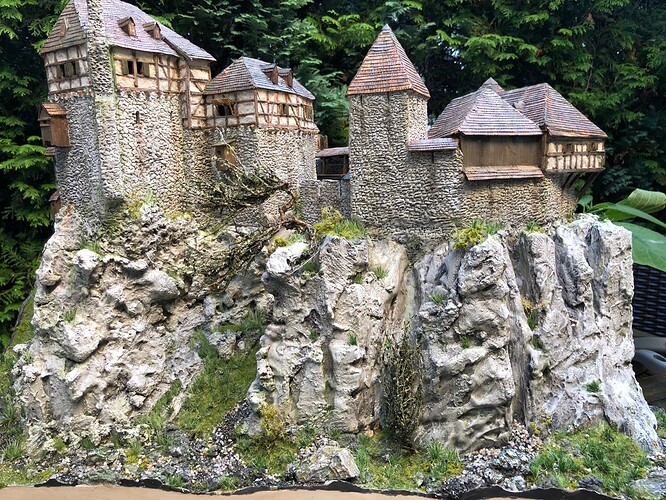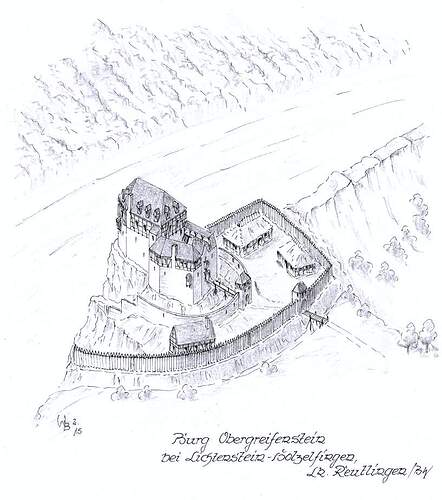Hello, everyone!
I would like to present my diorama “Greifenstein Castle near Holzelfingen / Swabian Alb”.
The action takes place in the 13th century. A group of monks asked for an overnight stay.
There is excitement in the castle. Life in a small castle in the Middle Ages is characterized by monotony. The cattle have to be looked after, the harvest has to be sown and brought in. Administrative tasks need to be done. Any variety is welcome.
The diorama is on a scale of 1:87. The castle was self-built from plywood and balsa wood, self-hardening modeling clay and the roof tiles from cardboard. The human figures were painted by me. The same goes for the cows … black and white breeding did not exist in the 13th century. So painting in brown.
Beautifully scenic and really atmospheric, the way you have situated it on top of an imposing mass of rock is particularly authentic. You have paid great attention to detail too with the architectural details which are fascinating. The painting and weathering bring it vividly to life.
I wonder if you could post a clearer picture of the entrance over the drawbridge and perhaps a few closer pictures of the figures? Also, how big is this piece?
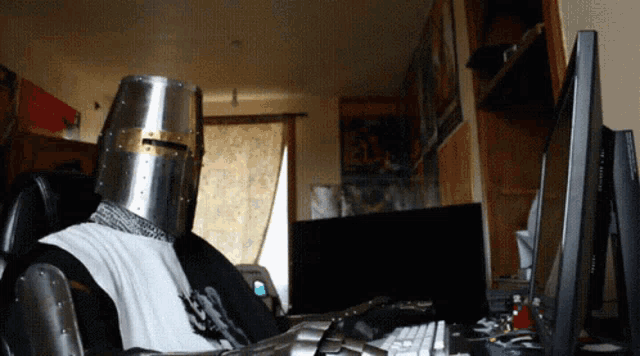
Real nice
Neat!! I love these early small castles. 



Very, very nice! Is this based on an historic actual Burg, or is this an imaginary “typical” small castle?
In either event, it’s excellent work! Thanks for sharing it with us. I hope to see more of your work in the future.
Absolutely stunning! Fantastic job. I love it!
Thank you for the great feedback.
The size of the diorama is 62 cm wide, 46 cm deep and the height is approx. 50 cm. If you click on the pictures, you will see roughly double the size of the original figures. More doesn’t make sense on that scale, I think.
The castle corresponds roughly to an original, but only the foundation walls (?) of the “Kernburg” (I don’t no an english name for it) exist. This is based on a reconstruction drawing on http://www.burgrekonstruktion.de.
I built the “Vorburg” (I don’t know any English name for it, too) to my ideas.
Source: http://burgrekonstruktion.de
Own drone photo:
Best regards
@Frank_Wetekam- Thanks for posting that extra info, it is great to see the actual place that inspired you.
Well, “kern” is an ancient Gaelic (Celtic) name for warriors. I don’t know where in Germany this castle is, but the southern half of Germany had a heavy Celtic influence. Possibly this use of “kern” has a common ancestry as the Gaelic meaning.


I think in this context “kern” means “core”, “Kernburg” equating to “Keep” or “Donjon” or “Inner Bailey”, with “Vorburg” being the “(Outer) Bailey”. I’m guessing this from a couple of German words I’ve encountered “Kernkraftwerk” = Nuclear Power Plant, the “Kern” here being the Reactor Core; and “Vorpanzer”, which I’ve seen translated as an Armoured Car in the sense of it’s role in scouting out “In Front”, but I’m more familiar with as a tank with additional (spaced) armour fitted. Funny what you pick up from this modelling lark…
Cheers,
M
Thanks for your posts.
No, that doesn’t come from Celtic. It is actually the main part or inner core of the castle where the lord of the castle lives with his family. The outer bailey contains the granaries, stables and houses of the servants. In many cases it was also the refuge for the residents of the surrounding villages.
